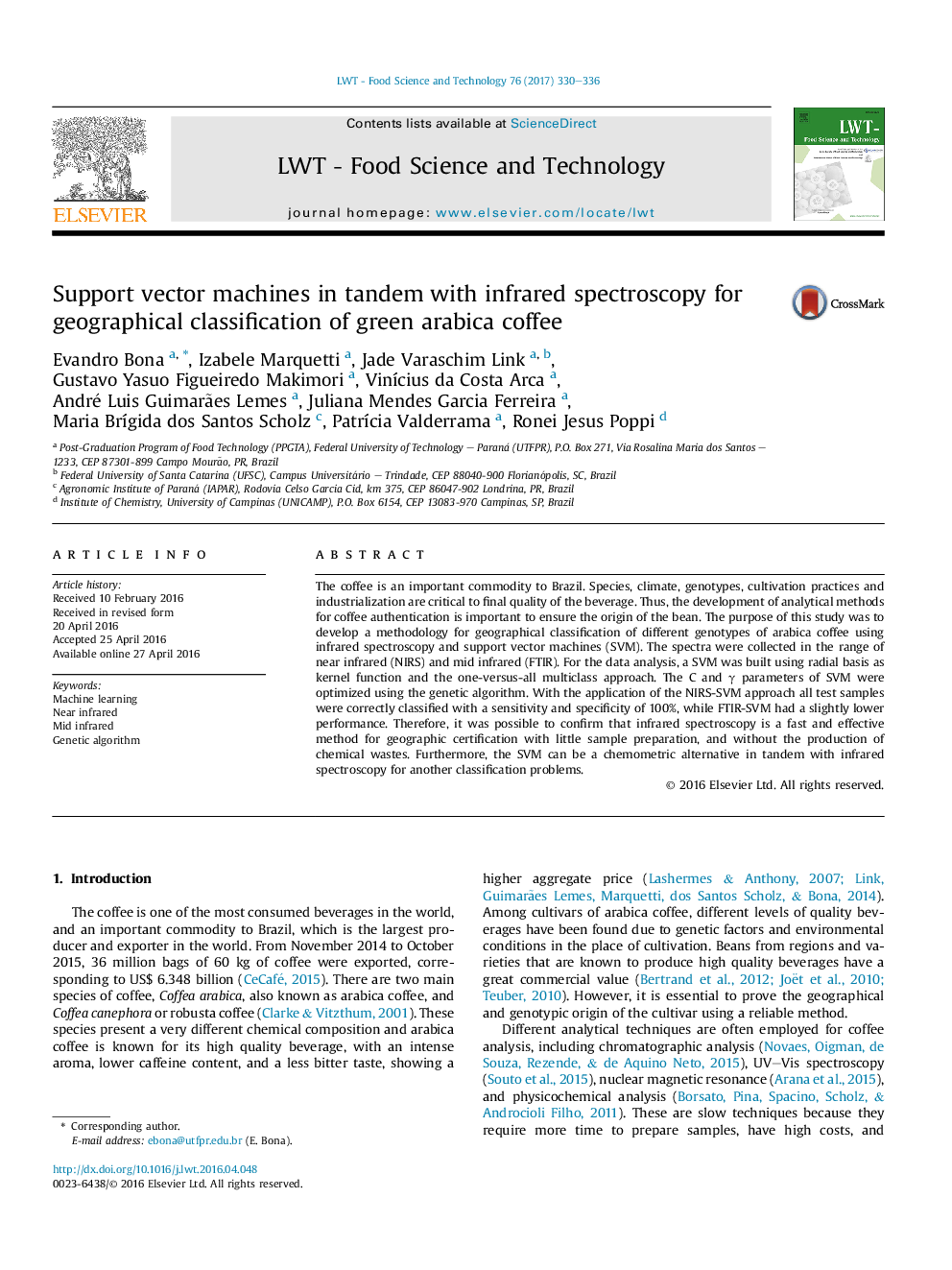| Article ID | Journal | Published Year | Pages | File Type |
|---|---|---|---|---|
| 5769128 | LWT - Food Science and Technology | 2017 | 7 Pages |
â¢A fast and sample preparation free methodology was used to determine coffee origin.â¢SVM model is successful to predict geographic origin.â¢The genetic algorithm is efficient for optimization of SVM parameters.â¢Infrared spectroscopy in tandem with SVM is a reliable tool for food control.
The coffee is an important commodity to Brazil. Species, climate, genotypes, cultivation practices and industrialization are critical to final quality of the beverage. Thus, the development of analytical methods for coffee authentication is important to ensure the origin of the bean. The purpose of this study was to develop a methodology for geographical classification of different genotypes of arabica coffee using infrared spectroscopy and support vector machines (SVM). The spectra were collected in the range of near infrared (NIRS) and mid infrared (FTIR). For the data analysis, a SVM was built using radial basis as kernel function and the one-versus-all multiclass approach. The C and γ parameters of SVM were optimized using the genetic algorithm. With the application of the NIRS-SVM approach all test samples were correctly classified with a sensitivity and specificity of 100%, while FTIR-SVM had a slightly lower performance. Therefore, it was possible to confirm that infrared spectroscopy is a fast and effective method for geographic certification with little sample preparation, and without the production of chemical wastes. Furthermore, the SVM can be a chemometric alternative in tandem with infrared spectroscopy for another classification problems.
